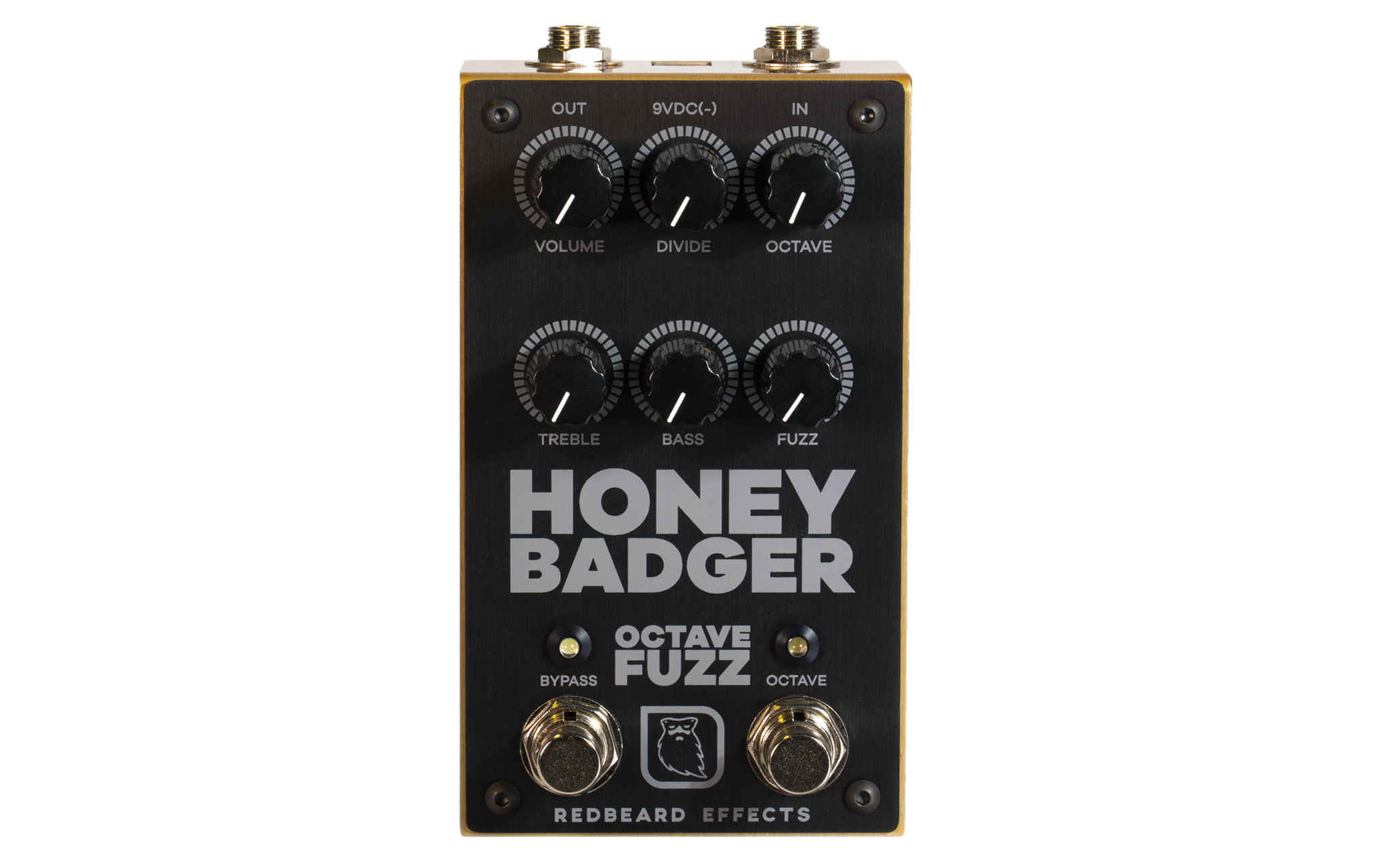Redbeard Effects’ Honey Badger Octave Fuzz will burrow into your tone with “gobs of glitchy, monophonic goodness”
New offering combines aggressive fuzz circuit with footswitchable sub-octave mode

UK-based Redbeard Effects launched last year with the Red Mist MKIV overdrive pedal. Now, the company headed by Skindred's Mikey Demus and ThorpyFX pedal designer Adrian Thorpe has introduced the Honey Badger Octave Fuzz, a new stompbox that “oozes gobs of glitchy, monophonic goodness.”
The Honey Badger pairs an aggressive fuzz circuit with a footswitchable sub-octave mode that, via a Divide knob, can add one or two octaves down or a combination of both.
Other features include bass and treble EQ controls, top mounted jacks, true bypass switching, 100 percent analog signal path, polarity protection and a durable custom chassis.
The Honey Badger is available for preorder for £199 (approx. $250). For more information, head to Redbeard Effects.
Get The Pick Newsletter
All the latest guitar news, interviews, lessons, reviews, deals and more, direct to your inbox!
Rich is the co-author of the best-selling Nöthin' But a Good Time: The Uncensored History of the '80s Hard Rock Explosion. He is also a recording and performing musician, and a former editor of Guitar World magazine and executive editor of Guitar Aficionado magazine. He has authored several additional books, among them Kurt Cobain: Montage of Heck, the companion to the documentary of the same name.
“Sonically excellent… we found that it could be a viable substitute for our vintage 1970s pedals”: Hamstead x That Pedal Show Redwing Analogue Stereo Modulator review
“The original Jordan Boss Tone was probably used by four out of five garage bands in the late ’60s”: Unpacking the gnarly magic of the Jordan Boss Tone – an actual guitar plug-in that delivers Dan Auerbach-approved fuzz










